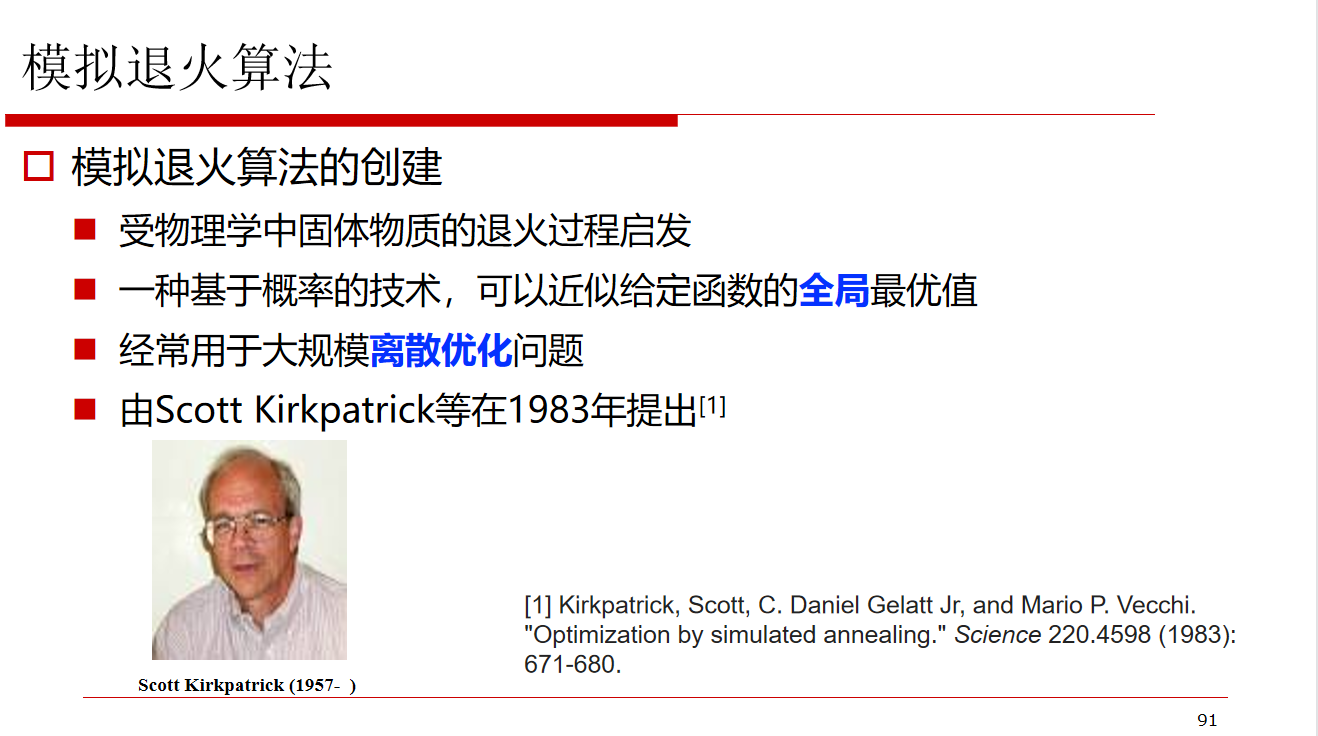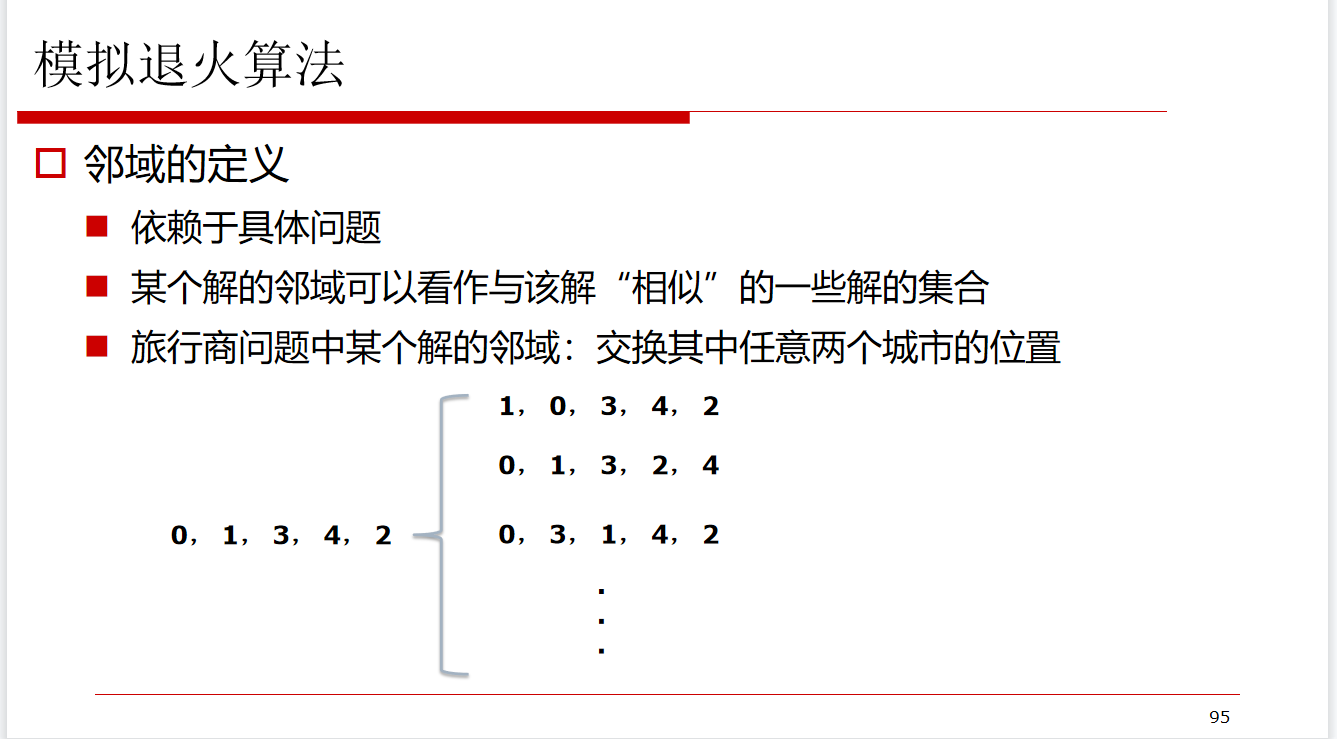一、模拟退火简介
二、详细代码
import math
import random
import matplotlib.pyplot as plt
def init_population(n):
'''生成一个种群,个体为全排列的随机排列'''
population = []
indivdul = 100 #个体数为100
for i in range(indivdul):
cs = [i for i in range(1,n+1)]
random.shuffle(cs) #打乱
population.append(cs)
return population
def ff_popu(population,n,v1,v2):
'''传入一个种群,返回一个函数值列表'''
ys = []
for i in population:
cost_sum = 0
location = i
for j in range(n):
for k in range(n):
loca1 = location.index(j+1)
loca2 = location.index(k+1)
cost = v2[j][k]*v1[loca1][loca2] #核心计算函数
cost_sum = cost_sum + cost
ys.append(cost_sum)
index = ys.index(min(ys))
#best = population[index]
return ys
def ff_indivdul(i,n,v1,v2):
'''传入一个个体,返回一个值'''
cost_sum = 0
location = i
for j in range(n):
for k in range(n):
loca1 = location.index(j+1)
loca2 = location.index(k+1)
cost = v2[j][k]*v1[loca1][loca2] #核心计算函数
cost_sum = cost_sum + cost
return cost_sum
def neig(population,n,T,v1,v2):
'''
传入一个种群
对种群中的每个个体产生邻域
根据退火原理来判断是否接受这个新解
返回一个新的种群
'''
popu_new = []
for i in population:
#随机生成两个数,让个体中这两个交换
r1 = random.randint(0,len(i)-1)
r2 = random.randint(0,len(i)-1)
i_after = i[:]
i_after[r1] = i[r2]
i_after[r2] = i[r1]
#分别计算初始值和邻域值
y = ff_indivdul(i, n, v1, v2)
y_after = ff_indivdul(i_after, n, v1, v2)
E = y_after - y
if E < 0:
i = i_after
else:
proba = random.random()
f = math.exp(-(E/T))
if proba <= f:
i = i_after
popu_new.append(i)
return popu_new
def read():
with open('D:/学习文件/大三上/科研课堂/qap-problems/QAP32.dat','r',encoding='utf-8') as f:
comments = f.read().splitlines()
n = eval(comments[0])
v11 = comments[2:2+n]
v22 = comments[3+n:3+n+n]
v1 = []
v2 = []
for i in v11:
int_list = list(map(int, i.split()))
v1.append(int_list)
for i in v22:
int_list = list(map(int, i.split()))
v2.append(int_list)
return v1,v2,n
def main():
v1,v2,n = read()
population = init_population(n)
#evolution = 1000
print(min(ff_popu(population,n,v1,v2)))
T = 30 #这个是初始温度
plt_y = []
while (T > 2):
population = neig(population,n,T,v1,v2)
print(min(ff_popu(population,n,v1,v2)))
plt_y.append(min(ff_popu(population,n,v1,v2)))
T = T - 0.1 #每次温度减去0.1
plt.plot(plt_y)
main()




























 1235
1235











 被折叠的 条评论
为什么被折叠?
被折叠的 条评论
为什么被折叠?








